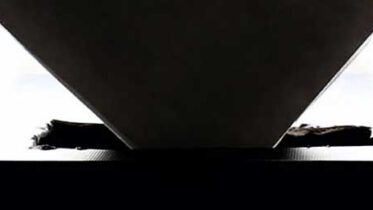Overview of the new Standard ST.26 for the filling of sequence listings
- 04 October 2022
- Articles
A sequence listing is an annex of all those patent applications intended to protect new nucleotide and/or amino acid sequences. Until July 1, 2022, World Intellectual Property Organization (WIPO) established that these sequence listings must comply with Standard ST.25, dated May 28, 1998.
However, due to the exponential development of technology and innovation in the biotechnology field, the format established in said standard no longer satisfies the needs of the most recent patent applications and databases that are part of “International Nucleotide Sequence Database Collaboration” (INSDC), which obtain not only the information generated by various basic research groups but also the sequences disclosed in patent applications, which are provided by the Industrial Property Offices of the United States, Japan, Korea, and Europe.
Due to the incompatibility of criteria, the change from the ST.25 format to the formats required by INSDC resulted in the loss of information that could be relevant to establish the prior art. Therefore, a new guideline was needed to solve these deficiencies, leading to Standard ST.26, which main goals are to homologate and improve the filing criteria for sequence listings, as well as to facilitate the search of nucleotide or amino acid sequences related to a patent application.
The main differences between ST.25 and ST.26 are the following:
ST.25 | ST.26 | |
| File format | .txt, which should be converted to PDF | .xml, without conversion. |
| General information on the application | All priorities, all applicants and inventors, and the invention title in the official language of the receiving office. | Only the oldest priority, one applicant, optionally one inventor, several titles in different languages. |
| Language of filing | The official language of the receiving office. | English, only one other language is allowed: · If the names of the Applicant or Inventor contain characters not included in the Table Unicode[1] of characters of the basic Latin alphabet. · For language-dependent free text with specific qualifier values[2]. |
| Annotation of the sequences | Basic information such as sequence length and molecule type using numeric identifiers and feature keys. | Specific information through elements and attributes, feature keys, and qualifiers. |
| “Non-standard” sequences | Not required to include in the listing: · D-amino acids · Linear portions of branched sequences · Nucleotide analogs
| Required to include in the listing: · D-amino acids · Linear portions of branched sequences · Nucleotide analogs |
| Molecule type | DNA, RNA, or PRT. | DNA, RNA, or AA with the mandatory “mol_type”[3] qualifier, which allows defining, for example, if an RNA sequence is an mRNA, tRNA, rRNA, etc. |
| Sequence length | Permits sequences of less than 10 specifically defined nucleotides and less than 4 specifically defined amino acids. | Prohibits sequences of less than 10 specifically defined nucleotides and less than 4 specifically defined amino acids[4]. |
| Feature location | No clearly defined format. | Using defined descriptors[5]. |
| Representation of the nucleotide sequences | 1 letter, lowercase, “u” represents uracil. | 1 letter, lowercase, “t” represents uracil in RNA sequences and thymine in DNA sequences. |
| Representation of the amino acid sequences | 3 letters, the first letter in uppercase. | 1 letter, uppercase. |
Sequence listings in ST.26 format (here is an example) have to be generated and validated using the free-to-use tools that WIPO has developed. For Applicants, a software tool called “WIPO sequence” has been elaborated; while a web service called “WIPO sequence Validator” has been developed to enable Industrial Property Offices to validate the filed sequence listings.
It should be noted that, as previously mentioned, Standard ST.26 entered into force on July 1, 2022, and therefore, as of this date, National, Regional and International Industrial Property Offices started to apply said standard to all those patent applications that international filling date is on or after July 1, 2022.
Regarding divisional applications, WIPO has determined that it is up to each jurisdiction to file them according to Standard ST.26, in case of divisional applications filed on or after July 1, 2022, or whether to file them according to the same standard applied to the main application.
However, in order to promote an effective transition to Standard ST.26, WIPO has recommended that Offices request that all those divisional applications filed on or after July 1, 2022, are governed by this new format.
Some Offices such as USPTO[6], EPO[7], JPO, KPO, INPI (Argentina) and INDECOPI (Peru), have implemented this suggestion; while other Offices such as INPI (Brazil)[8], INAPI (Chile), IMPI (Mexico) and IPO (United Kingdom)[9] have resolved to adopt a more friendly criterion with Applicants and have decided that divisional applications maintain the same format with which the main application was filed.
In the case of Mexico, IMPI has additionally specified that, for all those patent applications filed directly or through Paris Convention, Standard ST.26 will be applicable as long as the claimed priority corresponds to or is later than July 1, 2022.
Finally, in addition to the tools for generating and validating sequence listings in ST.26 format, WIPO carried out a series of webinars and has elaborated support material in order to answer frequently asked questions, as well as to provide solutions to the most common problems reported by users:
- WIPO ST.26: Introduction (available in Spanish)
- WIPO ST.26: Advanced (available in Spanish)
- WIPO Sequence (available in Spanish)
- WIPO Sequence Validator (available in Spanish)
- WIPO Sequence and ST.26 Knowledge Base Home
- FAQ: Implementation of WIPO ST.26
If you have any questions related to the format of the sequence listing applicable to your patent application for filing in Mexico, as well as a complete guide for generation or editing your sequence listing, please contact ClarkeModet Mexico’s specialists at info@clarkemodet.com.mx.
[1] WIPO, Standard ST.26- Annex 4, pages 90 and 91.
[2] WIPO, Standard ST.26- Annex 1, Sections 6 and 8, Tables 5 and 6, pages 50-71 and 79.
[3] WIPO, Standard ST.26- Annex 1, Sections 6 and 8, pages 50-71 and 79.
[4] WIPO, Standard ST.26- Annex 1 – Tables 1 and 3, pages 28 and 30.
[5] WIPO, Standard ST.26- Paragraphs 64-70, pages 17-18.
[6] https://www.uspto.gov/patents/apply/sequence-listing-resource-center/wipo-standard-st26-news
[7] https://www.epo.org/law-practice/legal-texts/official-journal/2021/12/a97.html
[8] https://www.gov.br/inpi/pt-br/servicos/patentes/materiais-de-consulta-e-apoio/listagem-de-sequencias-biologicas-st26
[9] https://www.gov.uk/government/publications/changes-for-patent-applications-with-biological-sequence-listings/changes-for-patent-applications-with-biological-sequence-listings










